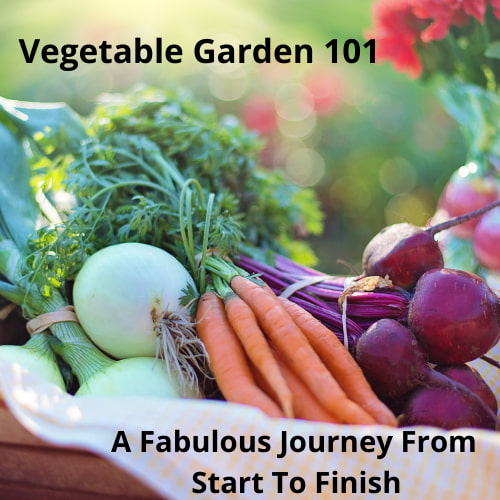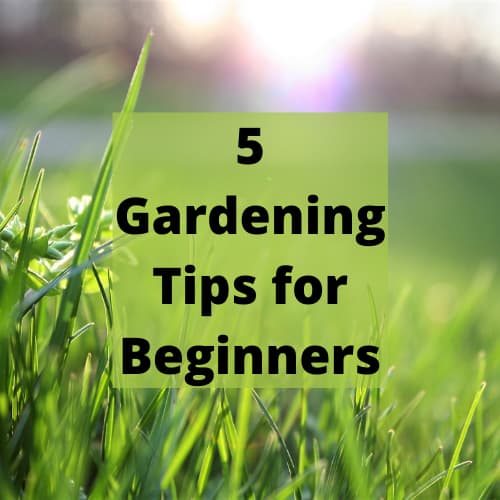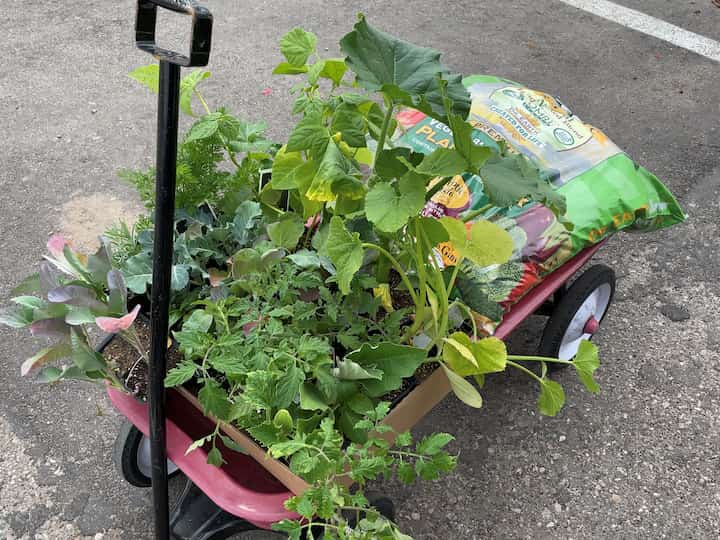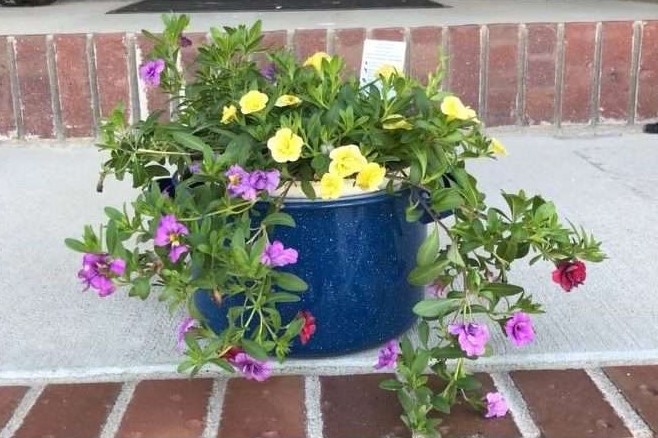Amazing Garden Trends
Now that the summertime has begun, you’ll want to get your garden looking beautiful. There are always new garden trends to make your outside space a place you want to spend time. Let’s explore some of the hottest new garden trends in recent years.
As an Amazon Associate, I earn from qualifying purchases at no extra cost to you. Click here for my disclosure policy
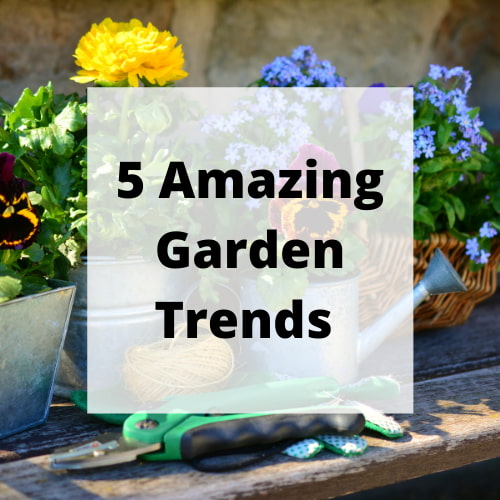
Garden Trends
1 . Go Wild Garden Trends
Over the past couple of years, gardeners are moving away from the more obviously designed spaces to embrace more naturalistic planting. This year, people are creating gardens with wild and natural looking foliage. For instance, adding tall Thuja Green Giant trees and palms is very trendy and provides a great purpose. They will enhance the privacy of your garden and encourage more wildlife. Gardeners are looking for different ways to bring wildlife into the garden, from hedgehogs, bees and butterflies to insects and birds. Planting flowers like the Buddleja will attract butterflies to your garden. These add a beautiful pop of color, with their pink and purple plumes. To bring hedgehogs into your garden, consider planting hedges to act as garden walls with cherry or beech rather than stone walls.

2. LANDSCAPE DECOR GARDEN TRENDS
There are plenty of ways to beautify your green spaces using Landscape Decor. Water features like bird fountains, ponds and birdbaths can become a focal point in your outdoor space, and attract more birds. There are many different types of birdbaths to choose from, for example, the pedestal birdbath. The pedestal birdbath has a quaint and classic design. These baths are raised high off the ground, protecting birds from predators. If you live in a cold climate a heated birdbath is the go-to-choice to attract birds all winter long You can also choose hanging birdbaths, which are usually attached to trees. These look pretty but are a little less grand than pedestal birdbaths. Other landscape decor options include statues or garden benches.
Is yard work and gardens a challenge for you? Why not make some creations for your yard that don’t need watering and add that extra wow factor!

3. ‘INDOOR’ DÉCOR TRENDS
Another current trend is creating an outdoor living room that is as comfortable as your indoor space. Choose garden furniture that resembles your furniture indoors with soft sofas and big plush cushions. Try colorful garden rugs for your deck, ornaments, and potted plants. The ‘indoor’ style decor allows you to create an inviting garden. Your garden should act as an extension of your home, another fully functional living space to use for your leisure. When you’re choosing the color schemes for your garden, dare to go bold and bright. If you want to get creative with your decor why not try a few garden upcycling ideas with the use of repurposed materials.
4. A FOCUS ON PERMACULTURE TRENDS
A growing trend is Permaculture gardening which refers to the process of edible gardening, growing herbs, vegetables, and fruits. The term itself means ‘permanent agriculture’. It relies on using the sun, rain, and wind, to keep your garden healthy. With this holistic approach, you don’t need to put in lots of work to create a beautiful garden. The approach uses 12 permaculture guidelines, a few are as follows:
- Store energy, using renewable resources.
- Avoid producing waste, keeping trash to a minimum.
- Use creativity to adjust to change.
- Integrate, and work with your plants and with nature.
5. GARDEN OFFICE TRENDS
With more people working from home than ever before, the garden office trend has taken off. These are like small summer houses or garden rooms (except they are used as office space). Sometimes these are called ‘garden pods’. When you’re working from home, it can be useful to have a designated space. You’ll improve your focus, and find it easier to separate your home life and your work life.
It can be helpful to sketch up a plan before you start making changes to your garden. Have an approximate idea of the layout, color schemes, and budget.
6. STRAW BALE GARDEN TRENDS
One of the biggest garden trends is straw bale gardens. They can be used to grow many types of plants and can easily be used if you are gardening in a small space. Using straw bales as the base for a garden allows you to start fresh every year without the need for permanent garden beds. You begin each season with fresh soil which means you don’t have to worry about soil health or soil contamination with spores. Another good reason to use straw bales is that they provide great drainage and are low-maintenance. They are fully compostable at the end of the growing season. I am writing about my journey with straw bale gardening and you can see some of my posts.
Here are a few other gardening trends:
- Create a wildlife garden to provide habitats that provide shelter and attract your local wildlife.
- In small urban gardens, small space gardens or a balcony garden use container plants. You can even grow your own food in containers.
- Attempt to incorporate as many native plants as possible to create a sustainable garden.
- Plant rain gardens
- Create gravel gardens and hard landscaping with drought-tolerant plants into your planting schemes to combat drought conditions and decrease water use.
- Create cottage gardens
- Use natural materials
- Create a vertical garden
- City Garden – utilizing a local community garden and sharing the wealth of what comes out of the garden
- Flower Pot or terracotta gardens in small backyards or lawns or on your terrace.
- Cut flower and Wildflower meadow gardens where you can create your own bouquets.
- Indoor gardens – indoor gardeners love growing your own herbs to cook with
Shop any of these stores and I receive a small commission at no cost to you.
 WORX Landroid L 20V Robotic...Shop on Amazon
WORX Landroid L 20V Robotic...Shop on Amazon Mueller Ultra Kettle: Model...Shop on Amazon
Mueller Ultra Kettle: Model...Shop on Amazon Solid Spray Bottle (4 Pack,...Shop on Amazon
Solid Spray Bottle (4 Pack,...Shop on Amazon Epsoak Epsom Salt 19 lb. Ma...Shop on Amazon
Epsoak Epsom Salt 19 lb. Ma...Shop on Amazon Fiskars Ergo Trowel - Heavy...Shop on Amazon
Fiskars Ergo Trowel - Heavy...Shop on Amazon Pennington Smart Seed 10008...Shop on Amazon
Pennington Smart Seed 10008...Shop on Amazon
Garden Trends Q & A
What should I put in my first garden?
What you should put in your first garden depends on several factors, including your location, climate, available space, and personal preferences. Here are some general guidelines to help you get started:
- Determine your growing zone: Find out your USDA plant hardiness zone or local climate zone. This information will help you choose plants that are well-suited to your specific climate and growing conditions.
- Start with easy-to-grow plants: If you’re new to gardening, it’s a good idea to begin with plants that are relatively low-maintenance and forgiving. Some good options for beginners include:
- Herbs: Basil, mint, parsley, and chives are easy to grow and can be used in cooking.
- Vegetables: Tomatoes, zucchini, and lettuce are beginner-friendly options.
- Flowers: Marigolds, sunflowers, and pansies are often easy to grow and add color to your garden.
- Plan your garden layout: Consider the available space and how you want to arrange your garden. You can choose between in-ground planting, raised beds, container gardening, or a combination of these methods.
- Soil preparation: Invest time in preparing your soil. Test the soil to determine its pH and nutrient levels, and amend it as needed to provide a healthy environment for your plants.
- Watering and irrigation: Ensure you have a reliable watering system in place, whether it’s through manual watering, soaker hoses, or a drip irrigation system. Be consistent with your watering routine, as both overwatering and underwatering can harm your plants.
- Sunlight: Most plants need a certain amount of sunlight to thrive. Make sure your garden receives the appropriate amount of sunlight each day based on the needs of your chosen plants.
- Pest and disease control: Learn about common pests and diseases in your area and take preventive measures to protect your plants. This might include using organic pest control methods or companion planting to deter pests.
- Mulch: Mulching helps retain moisture, suppress weeds, and regulate soil temperature. Consider applying mulch around your plants to improve growing conditions.
- Fertilization: Depending on your soil quality and the types of plants you’re growing, you may need to fertilize periodically. Use organic or slow-release fertilizers to avoid overfeeding your plants.
- Start small: It’s better to start with a small garden and gradually expand as you gain more experience. This will help you manage your garden more effectively and learn from your successes and mistakes.
- Learn and experiment: Gardening is a skill that improves with experience. Don’t be afraid to try new plants and techniques, and always be open to learning from your garden’s performance.
- Enjoy the process: Gardening can be a relaxing and rewarding hobby. Take the time to appreciate the beauty of your garden and the joy it brings.
Remember that gardening is a continuous learning experience, and the key is to be patient and observant as you develop your green thumb.
How do you start a vegetable garden for beginners?
Starting a vegetable garden as a beginner is an exciting and rewarding endeavor. Here are the steps to help you get started:
- Choose a Suitable Location:
- Select a sunny spot: Most vegetables require at least 6-8 hours of direct sunlight per day. Choose a location with good sun exposure.
- Access to water: Ensure your garden is located near a water source for convenient and consistent watering.
- Plan Your Garden:
- Determine the garden size: Start small, especially if you’re a beginner. A 4×4 or 4×8-foot raised bed is a manageable size.
- Layout: Sketch a simple garden plan to decide where each vegetable will be planted. Consider spacing and placement according to plant requirements.
- Prepare the Soil:
- Test your soil: Use a soil test kit to check the pH and nutrient levels of your soil. Amend the soil as needed to create a fertile and well-draining environment.
- Add organic matter: Mix compost or well-rotted manure into your soil to improve its structure and nutrient content.
- Choose Easy-to-Grow Vegetables:
- As a beginner, it’s best to start with vegetables that are relatively low-maintenance. Some good choices include:
- Tomatoes
- Zucchini
- Lettuce
- Radishes
- Green beans
- Peppers
- As a beginner, it’s best to start with vegetables that are relatively low-maintenance. Some good choices include:
- Buy Quality Seeds or Plants:
- Choose high-quality seeds or healthy seedlings from a local nursery or garden center. Look for varieties suitable for your climate.
- Plant Your Vegetables:
- Follow the planting instructions on the seed packets or plant labels.
- Pay attention to spacing recommendations to avoid overcrowding, which can lead to disease and poor growth.
- Watering:
- Water consistently: Keep the soil evenly moist, but not waterlogged. A soaker hose or drip irrigation system can help maintain consistent moisture.
- Water in the morning to allow the foliage to dry before evening, reducing the risk of fungal diseases.
- Mulch:
- Apply a layer of organic mulch (e.g., straw, wood chips, or compost) around your plants to conserve moisture, suppress weeds, and regulate soil temperature.
- Fertilize:
- Use a balanced, slow-release fertilizer or organic alternatives according to the recommendations on the seed packets or plant labels. Avoid over-fertilizing, as it can harm your plants.
- Pest and Disease Management:
- Monitor your plants for signs of pests and diseases. Remove affected leaves or use organic pest control methods as needed.
- Consider companion planting to deter pests naturally.
- Support and Staking:
- Some vegetables, like tomatoes and peppers, may need support or staking as they grow. Use cages, trellises, or stakes to keep plants upright.
- Regular Maintenance:
- Weeding: Keep your garden free of weeds that compete with your vegetables for nutrients and water.
- Pruning: Trim overgrown or dead branches and leaves to promote healthy growth.
- Harvesting: Harvest your vegetables when they are ripe to encourage further production.
- Learn and Experiment:
- Gardening is an ongoing learning process. Pay attention to your garden’s performance and be open to trying new varieties and techniques.
- Enjoy the Fruits of Your Labor:
- The joy of gardening comes from watching your plants grow and enjoying the fresh, homegrown produce. Share your harvest with friends and family.
Starting a vegetable garden as a beginner can be a fun and fulfilling hobby. Remember that it’s okay to make mistakes and learn from them as you go. Over time, you’ll develop the skills and knowledge to grow a successful and bountiful garden.
You might be interested in further reading: The Actual Truth and Reality of Growing My Seasonal Garden
What is modern garden style?
Modern garden style, often referred to as contemporary or minimalist garden design, is characterized by clean lines, simplicity, and a focus on functionality and aesthetics. It incorporates elements of contemporary art and architecture into outdoor spaces. Here are some key features and principles of modern garden style:
- Clean and Simple Lines: Modern gardens feature straight, geometric lines and shapes, such as rectangles and squares. The design is uncluttered and minimalistic, emphasizing simplicity and order.
- Minimal Planting: Modern gardens often have a limited plant palette with carefully chosen, sculptural plants. These plants are selected for their form, color, and texture rather than their abundance. Grasses, succulents, and architectural trees are common choices.
- Structural Elements: Modern gardens incorporate hardscape features like concrete, steel, and glass. Patios, walkways, and retaining walls are designed with a sleek and contemporary aesthetic.
- Neutral Color Palette: A modern garden typically uses a neutral color palette with a focus on shades of gray, black, white, and sometimes subtle earth tones. This creates a sense of cohesion and serenity.
- Water Features: Water is often used as a design element in modern gardens. Reflecting pools, fountains, or linear water channels can add a calming and reflective quality to the space.
- Outdoor Furniture: Modern garden furniture is usually sleek and minimalistic, often made of materials like stainless steel, aluminum, and teak. The furniture is selected to complement the overall design.
- Lighting: Thoughtful lighting design is essential in modern gardens. It can include low-profile, integrated lighting fixtures, uplighting for plants or architectural features, and the use of LED technology for energy efficiency.
- Sustainability: Many modern gardens prioritize sustainability and may incorporate features like rain gardens, native plants, and efficient irrigation systems. Sustainable materials are often used for hardscaping.
- Privacy and Screening: Modern gardens may incorporate privacy elements such as tall hedges, screens, or decorative panels to create secluded areas within the garden.
- Indoor-Outdoor Connection: Modern garden design often blurs the lines between indoor and outdoor living spaces. Large glass doors or walls that open onto the garden can create a seamless transition.
- Art and Sculptures: Sculptures and art pieces are frequently used as focal points or accents in modern gardens, adding an artistic dimension to the outdoor space.
- Low Maintenance: The minimalist approach of modern garden design often results in gardens that are relatively low maintenance, making them suitable for busy urban lifestyles.
Modern garden style is not limited to a single template and can vary in its interpretation, but it consistently embraces contemporary design principles to create outdoor spaces that are both functional and visually appealing. Whether in a small urban courtyard or a spacious suburban yard, modern gardens aim to create a sense of tranquility and harmony in a streamlined and stylish manner.
What is the most popular garden plant?
Determining the single most popular garden plant can be challenging, as preferences vary greatly depending on location, climate, and individual taste. However, some garden plants tend to be widely popular due to their versatility, ease of care, and aesthetic appeal. Here are a few plants that are commonly favored in many gardens:
- Roses: Roses are classic garden favorites known for their beauty and fragrance. They come in various colors and varieties, making them suitable for a range of garden styles.
- Lavender: Lavender is beloved for its lovely scent, attractive foliage, and its use in aromatherapy. It’s a drought-tolerant and easy-to-grow plant.
- Tomatoes: While technically a fruit, tomatoes are often grown in vegetable gardens. They are popular because of their versatility in the kitchen and the satisfaction of homegrown produce.
- Tulips: Tulips are widely appreciated for their vibrant, colorful blooms in spring. They’re often planted in mass displays, adding a burst of color to gardens.
- Lilies: Lilies are elegant and fragrant flowers that come in various forms and colors, making them a favorite for many gardeners.
- Sunflowers: Sunflowers are cheerful and easy to grow, making them a popular choice for both children and experienced gardeners.
- Hostas: These shade-loving plants are known for their attractive foliage and are commonly used for landscaping and as ground covers.
- Hydrangeas: Hydrangeas are admired for their large, globe-shaped flower clusters and their ability to change color depending on soil pH.
- Lavender: This fragrant herb is known for its soothing aroma and is used in various culinary and therapeutic applications.
- Mint: Mint is a versatile herb commonly grown in herb gardens and for making teas and cocktails.
While these are some of the popular garden plants, what’s popular in your area may vary, and it’s important to consider your local climate and conditions when selecting plants for your garden. Additionally, personal preferences play a significant role in what makes a garden plant a favorite for an individual gardener.
Are houseplants in style?
Houseplants were indeed experiencing a surge in popularity and were considered “in style.” This trend had been growing for several years and was driven by various factors:
- Wellness and Biophilia: Many people were recognizing the physical and mental health benefits of having houseplants. The presence of greenery in indoor spaces was seen as a way to reduce stress, improve air quality, and enhance overall well-being.
- Aesthetic Appeal: Houseplants were appreciated for their aesthetic value. They added a touch of nature to interior design, making spaces more visually appealing and inviting.
- Minimalism: Houseplants fit well with minimalist and modern interior design trends, where simplicity, clean lines, and natural elements were favored.
- Social Media Influence: Social media platforms like Instagram and Pinterest played a role in popularizing houseplants. People often shared their indoor gardens and plant collections, inspiring others to join the trend.
- Sustainability: Growing indoor plants was seen as a sustainable and eco-friendly practice, aligning with the growing interest in environmental consciousness.
- Urban Living: As more people lived in urban environments with limited access to green spaces, houseplants provided a way to connect with nature within the confines of city living.
- Variety and Accessibility: There was a wide variety of houseplants available, catering to different skill levels and preferences. Additionally, houseplants had become more accessible through local nurseries, online retailers, and plant swaps.
It’s important to note that style trends can change over time.

Check out some of my other gardening posts!




